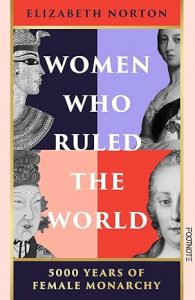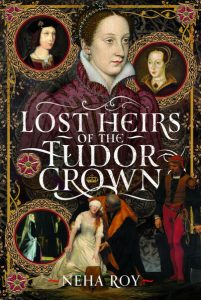3 Tudor Queens (Lady Jane Grey, Mary I and Elizabeth I). If things had gone to plan there would have been no Queens. Daughters did not have equal rights in terms of precedence. It was sons that counted.
Prince Arthur died quite suddenly in April 1502. This destabilised the Tudor regime quite seriously. All the hopes of the Tudor dynasty lay on the shoulders of Prince Henry.
There would not have been 6 wives if Henry had been content with a daughter or Catherine of Aragon’s first son had survived.
Edward VI came to the throne in January 1547. Edward is often described as a sickly boy but that is from hindsight. It was when measles fatally weakened his immune system, that the question of the succession became an urgent one.
In theory, the crown should have been left to his half-sisters, Mary, followed by Elizabeth. Edward had other ideas and drew up his ‘Devise for the Succession’ and removed them both from the line of succession. He removed Mary because she was a Catholic, but this did not apply to Elizabeth. Edward feared that his sisters would marry Catholic princes.
Edward sought a good Protestant successor and favoured his cousin, Lady Jane Grey. Jane had the reputation of being an evangelical, so in Edward’s eyes, apart from her sex, she was ideal.
The crown was originally left to Jane’s heirs male but a change was made in Edward’s own hand to ‘Lady Jane and her heir’s male. There has been speculation as to whether this was all Edward’s idea but Tracy, thinks it was his idea due to his faith.
Lady Jane Grey – First Tudor Queen Regnant
Little is known of Jane’s earlier years but there is evidence of an unhappy childhood. This changed when Jane became the ward of Thomas Seymour and moved to live with him and Queen Dowager, Katherine Parr at Chelsea.
Elizabeth and Jane were educated together, both were very intelligent and ‘toward’ in the reformed faith.
Jane returned to Bradgate Park after the death of Katherine Parr and Thomas Seymour’s arrest for treason. Her parents still hoped that she might marry the King and made frequent visits to court. When Jane visited the court, Mary sent her a rich gown, which Jane refused to wear.
With Edward ill, Jane’s parents shifted ambition to the next best candidate, Guildford Dudley. Jane resisted the marriage at first, but it went ahead on 25th May 1553.
Edward VI died on 6th July and Jane was proclaimed Queen on the 10th. The Bishop of London preached a sermon declaring her right to the throne.
Jane did not want to be queen and was merely a pawn in the power games. She was little more than a puppet queen, but her spirit showed through again when she refused to make Guildford King. Jane would reluctantly take power for herself but not give any to her husband.
Mary knew even Protestants were uneasy about the line of succession being usurped. Rather than flee abroad, she set up camp at Framlingham Castle. Mary wrote to the Privy Council announcing that she was the true Queen. Tracy has just filmed a sequence in the Queen’s House at the Tower of London. This was where the Privy Council were gathered when they received Mary’s letter.
The Privy Council eventually declared for Mary on 19th July and Jane and Guildford became prisoners in the Tower.
Mary I – Second Tudor Queen Regnant
Jane was only Queen for nine days and not able to set any new precedents as Queen of England. This was all left to Mary.
Soon there was deep unease about her sex. There were practical problems to do with Mary’s gender, as the monarchy was set up to deal with a King and the household set up was a problem. There was no coronation ceremony for Queen, so they used the one for a King.
Mary had some of her father’s fiery nature and was not a pushover. In one area, she was deeply conventional, the first thing Mary needed was a husband to help her rule. She did not want to rule alone.
Mary had her finest hour during the Wyatt Rebellion, where she made a rousing speech to the people of London at the Guildhall.
This was the end for poor Lady Jane Grey. Even though she took no part in the rebellion, her father had and effectively signed her death warrant. Elizabeth was also arrested. She managed to talk her way out of trouble although she was almost executed.
The Protestant burnings have obscured every other element of Mary’s reign and cemented her reputation as the bloodiest Tudor. But if you count the number of people executed under each monarch, Mary was not the worst.
Mary deserves more credit than history has given her. Without Mary, it would have been much harder for Elizabeth to come to the throne.
Elizabeth had to confront prejudice as well. One of her tactics was to play on her feminine frailties when pressed to make a decision, so she could procrastinate. Also made a show of relying on advice from Privy Councillors.
Elizabeth made a virtue of her sex; Mary had never done this, and Jane did not get the chance to.
Women were the greatest threat to Elizabeth’s throne (potential heirs – Margaret Douglas, Katherine Grey and Mary, Queen of Scots). With no direct successor, the throne passed to a man and the ‘norm’ was restored. But James I was not what Elizabeth’s subjects were expecting.
There was a Q&A at the end of the talk and Jane was the subject of several questions:
If Lady Jane Grey’s bid to the throne had been successful, what do you think would have been the fate of Mary and Elizabeth?
If it were up to Jane, they would have been welcome at court, just like Mary did with Jane’s sisters but if Dudley had dominated the Queen, he would have controlled who they married or maybe their lives would have been in danger, unless Jane asserted her authority.
Was Jane seen as the better option as she was married to a Protestant?
Edward feared that Mary or Elizabeth would marry a Catholic, so this increased Jane’s appeal.
Why was Jane taken on as a ward by Thomas Seymour when her parents were still alive?
Wardship of noble children could be bought, a legal contract was set up and money changed hands. Parents wanted to put their children in the path of the King. Jane’s parents saw Thomas Seymour as an effective way of achieving that.
Why is Jane excluded from the list of monarchs?
Jane should be listed as Queen in the usual lists. Jane’s gets her own chapter in my next book.
How do you think that Henry VIII would have reacted to Edward VI’s short reign and then 3 Queens?
Henry would have been devastated; he had done all he could to get a male successor.
You said that Elizabeth learned from Mary’s reign but do you think that Elizabeth learned anything from Jane’s short reign?
Jane did not rule long enough for Elizabeth to really learn anything from her reign. Elizabeth learned from Jane during her life, as they were educated together and would have discussed religious views. Elizabeth would have been sent a real warning about the dangers of being close to the throne. Although maybe she would have been impressed that Jane stood up to John Dudley.
Was Lady Jane officially a Tudor?
Never considered it before, assume she had more than a thimble of Tudor blood in her veins. Not as Tudor as the other Queens but in my eyes, she is part of the Tudor monarchy.




































